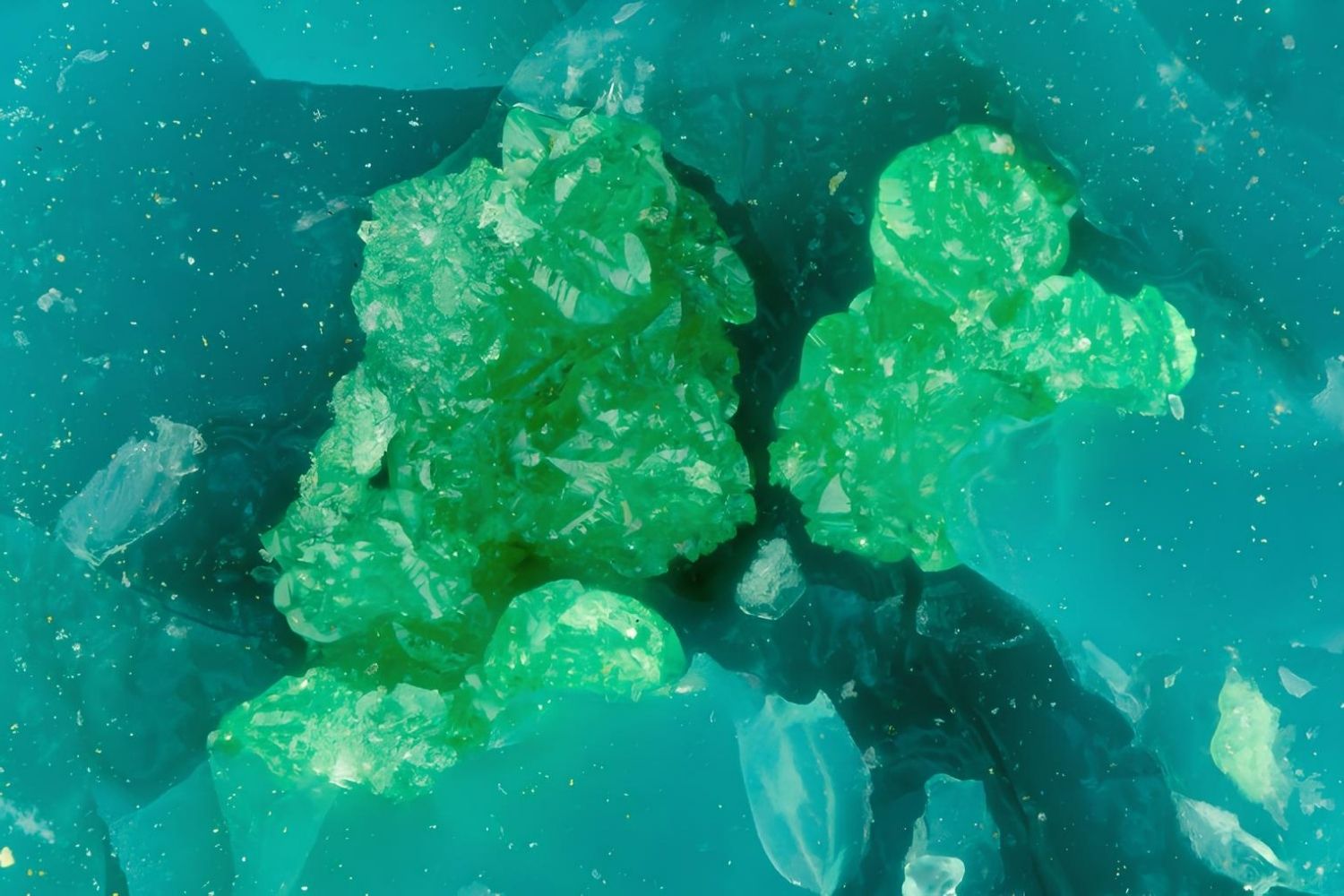
Tsumebite is a rare and captivating mineral that has intrigued geologists and collectors alike. Found primarily in the Tsumeb Mine in Namibia, this mineral boasts a striking green color due to its unique chemical composition. But what exactly makes Tsumebite so special? For starters, its formation involves a fascinating blend of lead, copper, and phosphate, creating a crystalline structure that's both beautiful and scientifically significant. Did you know that Tsumebite often forms in oxidized zones of lead-copper deposits? This mineral's rarity and vibrant hue make it a prized specimen in mineral collections worldwide. Let's dive into 30 intriguing facts about Tsumebite that will deepen your appreciation for this extraordinary mineral.
Key Takeaways:
- Tsumebite is a rare, green mineral found in Namibia, prized for its beauty and unique properties. It's used in education, collected by enthusiasts, and can fetch high prices in the mineral market.
- Tsumebite's vibrant green color, small prismatic crystals, and association with lead and copper minerals make it a fascinating subject for collectors and researchers. It's also known for forming pseudomorphs and fluorescing under ultraviolet light.
What is Tsumebite?
Tsumebite is a rare mineral known for its striking green color. It was first discovered in the Tsumeb Mine in Namibia, which is where it gets its name. This mineral is highly sought after by collectors due to its unique properties and beauty.
- Tsumebite is a phosphate mineral that contains lead and copper.
- The mineral's chemical formula is Pb2Cu(PO4)(SO4)(OH).
- It was first identified in 1936.
- Tsumebite is often found in oxidized zones of lead-copper deposits.
- The Tsumeb Mine, where it was first discovered, is one of the most famous mineral localities in the world.
Physical Properties of Tsumebite
Tsumebite's physical characteristics make it a fascinating subject for study. Its vibrant color and crystal structure are particularly notable.
- The mineral typically forms small, prismatic crystals.
- It has a Mohs hardness of 3.5 to 4.
- Tsumebite's color ranges from bright green to dark green.
- It has a vitreous to resinous luster.
- The mineral exhibits a white streak when scratched on a porcelain plate.
Where is Tsumebite Found?
While Tsumebite was first discovered in Namibia, it has since been found in other locations around the world.
- Apart from Namibia, Tsumebite has been found in the United States.
- It is also found in Australia.
- The mineral has been discovered in Mexico.
- Tsumebite occurrences have been reported in Germany.
- It is often found in association with other minerals like pyromorphite and mimetite.
Uses and Significance of Tsumebite
Though not commonly used in industrial applications, Tsumebite holds significant value for collectors and researchers.
- Tsumebite is primarily collected for its aesthetic value.
- It is studied for its unique crystal structure.
- The mineral is used in educational settings to teach about phosphate minerals.
- Tsumebite specimens can fetch high prices in the mineral market.
- It is often displayed in museums around the world.
Interesting Facts About Tsumebite
There are many intriguing aspects of Tsumebite that make it a subject of fascination.
- Tsumebite can form pseudomorphs, where it replaces another mineral while retaining the original mineral's shape.
- The Tsumeb Mine, where it was first discovered, is known for producing over 200 different minerals.
- Tsumebite is often found in botryoidal (grape-like) formations.
- The mineral can fluoresce under ultraviolet light.
- Tsumebite's green color is due to the presence of copper in its structure.
How to Identify Tsumebite
Identifying Tsumebite can be challenging due to its similarity to other green minerals. However, there are specific features to look for.
- Tsumebite's green color is a key identifying feature.
- Its crystal habit is usually prismatic or tabular.
- The mineral's hardness can help distinguish it from softer minerals.
- Tsumebite's white streak is another identifying characteristic.
- It often occurs in association with other lead and copper minerals, which can provide clues to its identification.
Tsumebite: A Mineral Marvel
Tsumebite stands out as a fascinating mineral with its vibrant green color and unique properties. Found mainly in the Tsumeb Mine in Namibia, this mineral has intrigued geologists and collectors alike. Its rarity and striking appearance make it a prized specimen in many collections.
Beyond its beauty, Tsumebite offers insights into the geological processes that shape our planet. Its formation involves complex chemical reactions, showcasing nature's incredible ability to create intricate structures. For those interested in mineralogy, Tsumebite serves as a reminder of the Earth's hidden treasures.
Whether you're a seasoned collector or just curious about the natural world, Tsumebite is a mineral worth exploring. Its story, from deep within the Earth to the display cases of museums and collectors, highlights the wonder and diversity of our planet's geological heritage.
Frequently Asked Questions
Was this page helpful?
Our commitment to delivering trustworthy and engaging content is at the heart of what we do. Each fact on our site is contributed by real users like you, bringing a wealth of diverse insights and information. To ensure the highest standards of accuracy and reliability, our dedicated editors meticulously review each submission. This process guarantees that the facts we share are not only fascinating but also credible. Trust in our commitment to quality and authenticity as you explore and learn with us.
